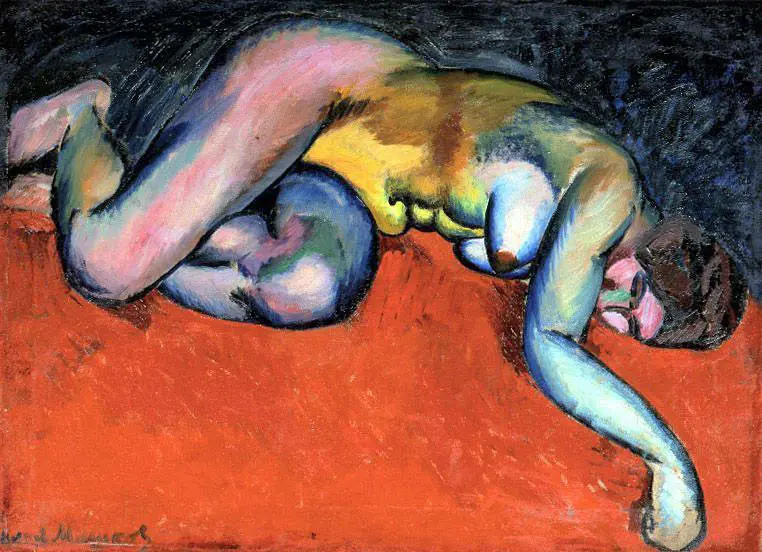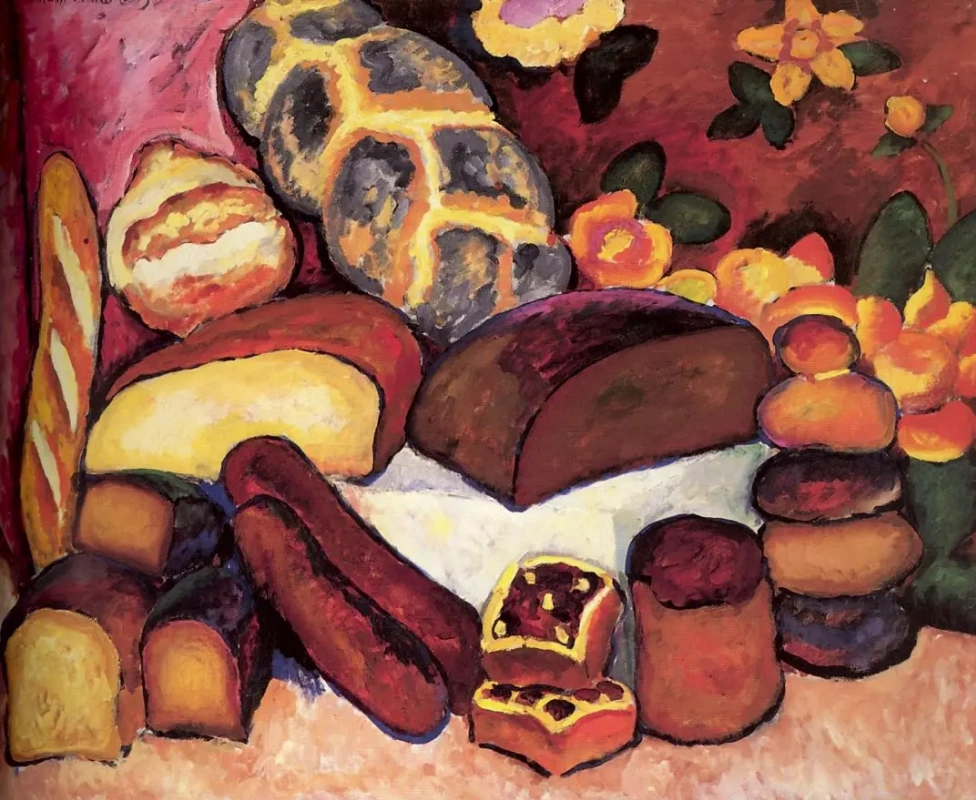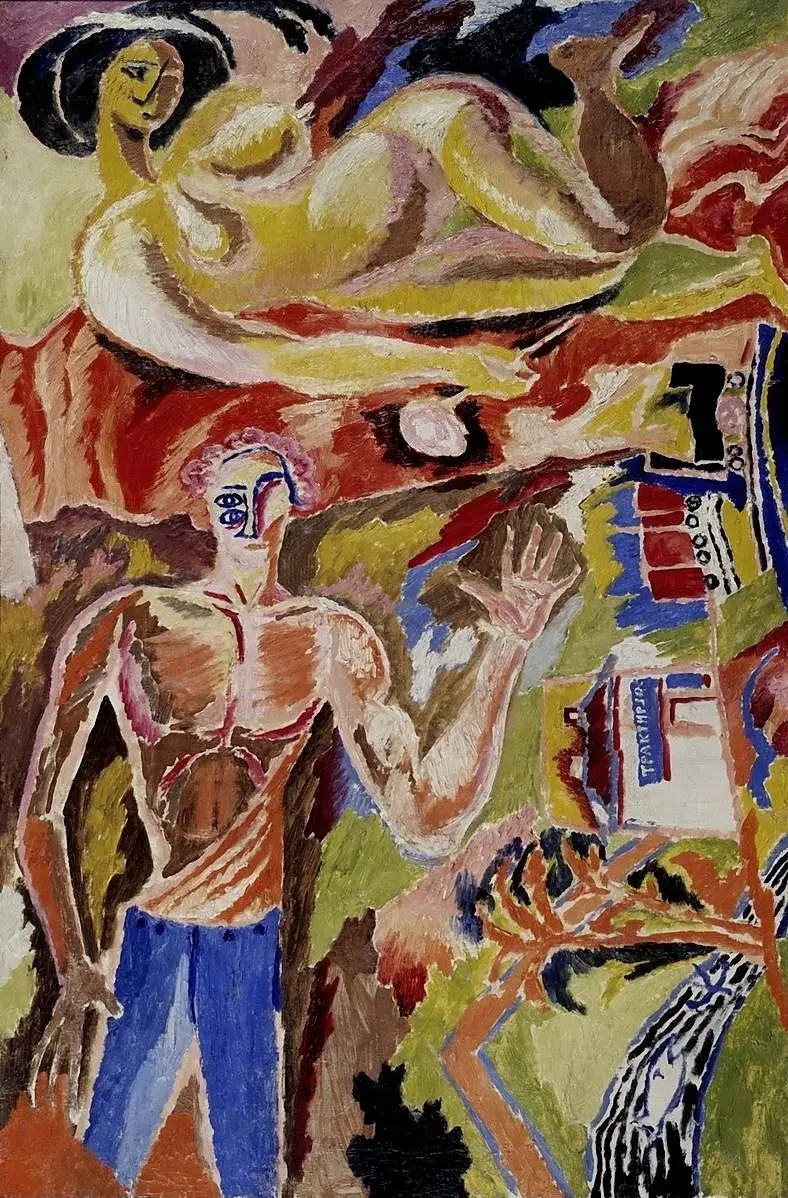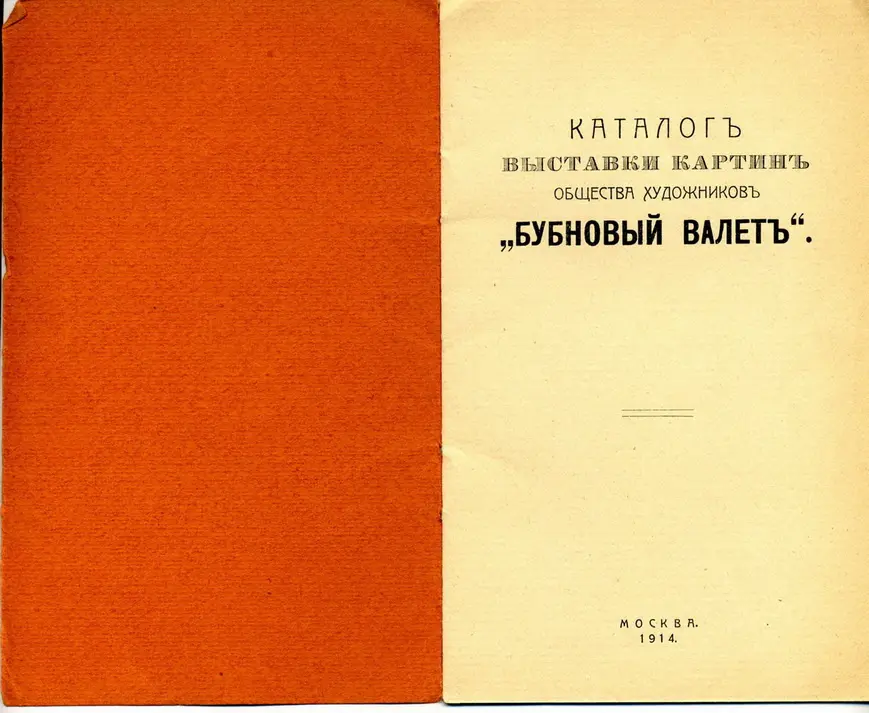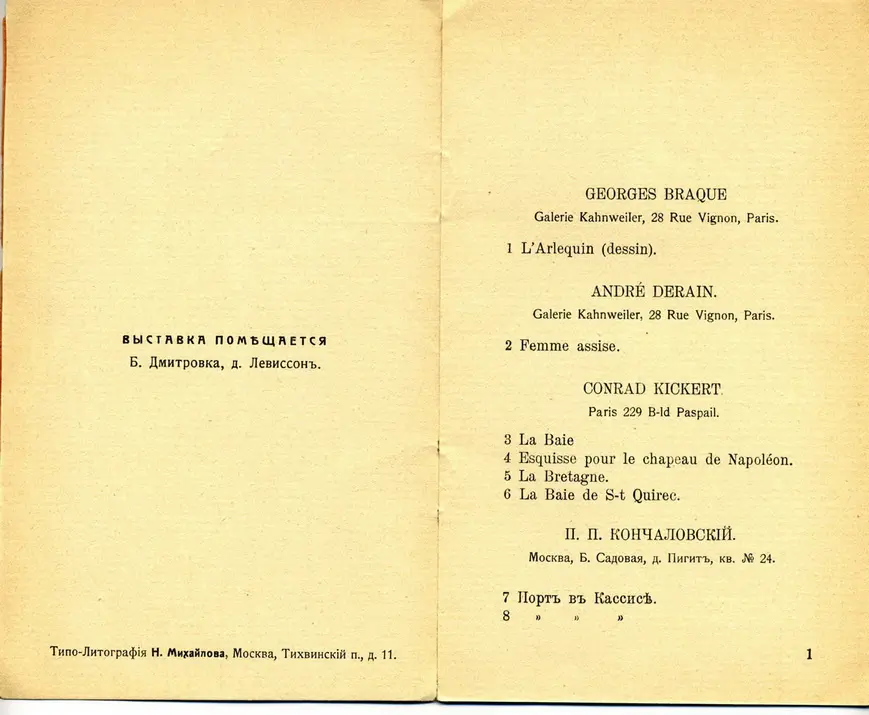
To love impossible to hate. Alexandre Benois and avant-garde
By the way, there were times when ‘avant-garde' was not an artistic term. In reference to art, it was first used some months prior to the ‘Knave of Diamonds' first exhibition in 1910. The society had not appeared then yet, but its core, the main body of it, had already gathered in Moscow. The future tradition-defiers, who wanted to ‘heave the classical authors overboard from the steamship of modernity,' found their enemy/friend in Alexandre Benois, whom David Burliuk scathingly acclaimed in the manifesto The Benois Brawlers and Modern Art of Russia. No other than Benois applied the term ‘avant-garde' to the gang of painters who had distanced themselves so far from the academic manner. Generally, Alexandre Benois was quite beneficent to the Diamond-Knavers. Not that he was so favourably disposed towards them — actually, he was not, — but sometimes, history can be ironic.
Alexandre Benois, an artist and art historian, was rather erratic and self-contradictory when it came to the Diamond-Knavers. Once, he dropped a sarcastic remark that Larionov could have become a real artist rather than keeping on painting primitive stuff — and this turned out to be a prophecy: some years later, Larionov would be declared the founder of neo-primitivism. Another catchphrase by Benois was ‘Russian Cézannists' as he referred to the Diamond-Knavers.
Why the ‘Knave of Diamonds’?
How on earth can it be a name for people of art? We are so used to art performances nowadays that can hardly be surprised at names of this sort. But if we go back to the time when academic painters and Peredvizhniki were succeeded by the Symbolists from the association ‘Blue Rose,' we will easily imagine how outrageous such a name must have sounded. Indeed, introducing a card term into the sublime spheres of art! Are they playing the buffoons? Well, the buffoonery was what the Diamond-Knavers were aiming at. By the way, according to fortune-tellers' interpretations, the knave implies youth, and the suit of diamonds represents seething blood. Moreover, an ace of diamonds was the symbol placed on prisoners' attire! So much room for indignant criticism, such a fine fat feeding for the public who were first facing avant-garde !The Knave of Diamonds was the name of the avant-garde exhibition held in 1910 in Moscow. The next year, some young non-conformist artists formed an art group. It was peculiar about it that critics were not the first to start laughing at the ‘Knaves.' He laughs best who laughs last, does he? Yes, but laughing first is laughing best, too. Ilya Mashkov remembered that most painters represented in the exhibition liked the name as it aroused astonishment, shock, and disgust in the fat bourgeoisie of then Moscow, as well as in merchants and nobles.
Only two years later, Burliuk and his posse would write the manifesto A Slap in the Face of Public Taste. But the exhibition, too, came as a slap. Quite in accordance with the name, it totally denied the obscure loftiness of the symbolists and conservative academic traditions.
The iconic authors, the steamship, and love
Calls for heaving Pushkin, Dostoevsky, Tolstoy etc., overboard from the steamship of modernity found in the manifesto are quoted in all discussions of futurism and avant-garde . So often quoted that people tend to ignore the following phrase: ‘He who does not forget his first love will not recognize his last.' Denying the iconic authors meant: they remain iconic, but we want to get farther than they did. Not hating others, but presenting ourselves — that is the point. So, the exhibition was something far more than just a scandalous escapade. The Diamond-Knavers wished to bridge the gap between life and art because the latter was no longer life-related. So they did — boldly, insolently, and flamboyantly.Kazimir Malevich was not an active member of the ‘Knave of Diamonds', but took part in collective exhibitions. He remarked, the paintings shown to the public in 1910, were like colourful flames. Indeed, the Diamond-Knavers never lacked colours, nor passion, nor flame.
Intensity
No one else but the ‘Knave of Diamonds' introduced a riot of colour, emphasis on the texture, canvas, stroke into Russian painting. The most appropriate word to describe the Diamond-Knavers' first exhibition is ‘intensity.' It was a real fusion, nay explosion of shine, luminosity, colour, wonder, it was a loud trumpeting that they, the avant-garde artists, had appeared, their time had come. Certainly, the point was not in ‘heaving' anybody overboard, but in their being — being themselves. And it is a good occasion to quote another great rebel. About that time, Pablo Picasso said, ‘When we invented Cubism , we had no intention whatever of inventing Cubism . We simply wanted to express what was in us. Not one of us drew up a plan of campaign.'The Diamond-Knavers idolised all corporeal and material, they returned painting to the firm earth, drove away the mystical mist, and instead, filled it with colour and substance. The ideological focus of the first exhibition was Ilya Mashkov’s Self-portrait and Portrait of Pyotr Konchalovsky. The muscle-bound artists, almost naked, with kettlebells, wine, a piano, and books on art — the world had never seen anything like that before!
Ilya Mashkov had the biggest share of criticism at that exhibition, which he took as a reason to say laughingly, ‘I'm the best-known when it comes to being blamed.' His models were termed battered and tarted-up, and he himself was called a savage who was able to convey his joy of seeing bread and fruit for the first time. However, this bordered on approval — able he was, indeed!
Novel, very novel image of an artist…
The Diamond-Knavers' portraits are a story of its own. A key feature of them is their being non-pathetic. The authors deliberately simplify the images portrayed, even reduce them to primitive. In this aspect, the very first exhibition, as well as the following ones, amazed the public.Lentulov portrayed himself as a typical merchant of immense obesity and named his work Le Grand Peintre (The Great Artist). Larionov showed himself as a shaven-headed peasant. Natalia Goncharova wilfully missed a chance of creating another La Belle Dame and, instead, painted a self-portrait with large hands, strong broad shoulders, and laughing eyes.
Expressly ordinary. How absurd! By the way, about that time, Joséphin Péladan, a symbolist, reproached some painters for calling themselves ‘fauves' and ‘yet dressing like everyone else so that they are no more noticeable than the floorwalkers in a department store.' Just you imagine: no admiration and praise for those who are sublime enough to converse with the muses! And avant-garde painters laugh and agree: that is the right thing!
Perhaps, this is the main point determining the ‘Knave of Diamonds' as a springboard for a lot of avant-garde movements that appeared and developed later: they just were having fun! Were they laughing at us? At conventionalists? At narrow-mindedness and vulgarity? At themselves? All is true, but first and foremost, their laughter was due to the excess of youthful energy, they rejoiced like children, no longer controlled, who could now do what they wanted.
The ‘Knave of Diamonds’ and others
The ‘Knave of Diamonds' exhibitions included works by the western colleagues who influenced the members of the art group — Picasso, Matisse, Le Fauconnier, Léger, Delaunay, Braque, Derain (see the catalogue of the ‘Knave of Diamonds' exhibition, 1914).
The first avant-garde paintress Natalia Goncharova. In her own lifetime, she managed to outdistance quite a number of her male colleagues. And in 2008, she became the world’s most expensive female painter (at the time), after her still-life with flowers had been sold for $ 10.9 million.
What did the Diamond-Knavers rest upon? Well, on the one hand, they were definitely influenced by Cézanne, Van Gogh, Gauguin, Matisse — to them they owed the sensuality of the stroke, the luminosity and brightness of colours. And alongside with it, they were inspired by Russian popular prints, the art of marketplaces and fairgrounds, oriental motifs. Actually, it was the reason for the disunion that took place a couple of years later. The artists that remained in the ‘Knave of Diamonds' — Konchalovsky, Mashkov, Lentulov — kept on following the guidelines set by the French: orphism , Cézannism, cubism . Others — Larionov, Goncharova, Malevich, Tatlin — utterly rejected the influences from the West and proclaimed that the Orient had been the cradle of culture, while Europe they called ‘a persistent thief.' (And what a brilliant leg-pull on the topic was arranged at Natalia Goncharova’s first solo exhibition!
The ‘Knave of Diamonds.’ Postscript
Officially, the group ‘Knave of Diamonds' was formed in 1911, but it will be nearer to the truth if we take as its birth the exhibition of the same name held in 1910. The second and the third exhibitions took place in 1912 and 1913 in Moscow. Besides, in 1913, the painters held an exhibition in Petersburg, and a year later, it was Moscow again. The official end of the ‘Knave of Diamonds' is considered the year 1917 — that is the year of the last exhibition with this name. Some researchers believe that all had been over earlier, in 1916. In that year, Konchalovsky and Mashkov left the group, it was then headed by Malevich, and the ‘Knave' ceased to be what it had been before. The artists, though, kept on uniting in new art groups.The further lives of those who formed the core of the ‘Knave of Diamonds' followed quite different courses. Larionov and Goncharova left the country right before the revolution to never come back again. David Burliuk, the father of Russian futurism , first emigrated to Japan, and later found himself in the United States where he declared himself the American Van Gogh. The fabulous, ethereal, almost dancing architecture in Lentulov’s landscapes, and his trademark sunshine faded and gave way to granite. The festive flesh of material things depicted by Mashkov turned into socialist realism. Konchalovsky devoted himself to landscapes, although he kept portraying his grandchildren and friends. But even today, when looking at the pictures by those artists so different from each other, created in their common ‘Knave' period, we cannot help stopping, transfixed, sensing the irrepressible joy of existence, of colour, the shine and music of light.
Text by: Alyona Esaulova








